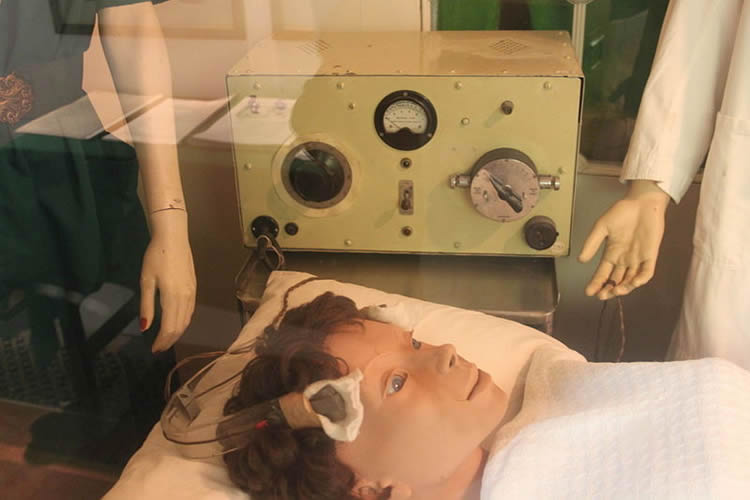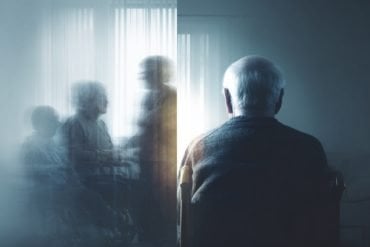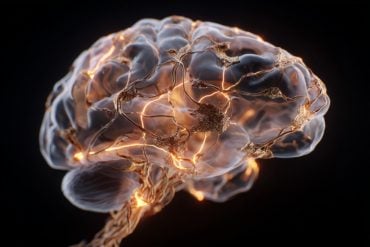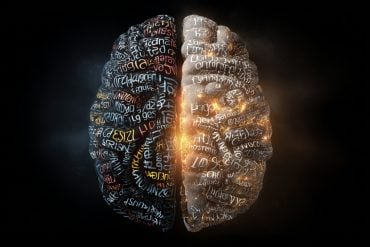Summary: Researchers say fear of electroconvulsive therapy is unfounded, as the treatment is safe and effective. However, the entertainment industry play on people’s fears of ECT and continue to show the treatment in a negative light.
Source: Aarhus University.
Electroconvulsive therapy (ECT) is a highly effective treatment for severe depression and other mental disorders, but the procedure is feared by many. A study headed by researchers from Aarhus University in Denmark documents that this fear is unfounded.
There is no shortage of frightening images of electroconvulsive therapy (ECT) in movies – most notably in “One flew Over the Cuckoo’s Nest”, in which the main character Randle McMurphy (Jack Nicholson) is given electroconvulsive therapy (ECT) at a psychiatric hospital in Oregon, USA in the 1970s.
It has turned out to be difficult to move on from the associations between ECT and pain, the exercise of power and danger. Even though “One flew Over the Cuckoo’s Nest” is 43 years old, the negative image of ECT remains intact for many people. This is emphasised by the fact that every fifth respondent to a British survey expressed a fear of dying from ECT. This is an unfortunate statistic according to Associate Professor Søren D. Østergaard from Aarhus University Hospital – Risskov, which is part of the Department of Clinical Medicine at Aarhus University in Denmark.
“In the psychiatric field we have had a clear impression that the fear of dying due to ECT was unfounded, but we have lacked a large-scale study on the topic. We have therefore conducted a systematic review of the literature that contains information about so-called ECT-related deaths, that is deaths where ECT represents the most likely cause of death,” explains Søren D. Østergaard.
Søren D. Østergaard is senior author of the article “The mortality rate of Electroconvulsive Therapy (ECT): A systematic review and pooled analysis”, which was recently published in the journal Acta Psychiatrica Scandinavica. The most significant result in the article is that only one ECT-related death has been reported for the 414.747 ECT treatments that are registered in studies published after 2001.
“The risk is very small and even many elderly patients with comorbid medical illnesses can be safely treated with ECT,” says Søren D. Østergaard.
The systematic review covered 15 studies with data from 32 countries published in the period from 1976 to 2014. For this entire period, the ECT-related mortality was estimated at 2.1 per 100,000 treatments. By comparison, the number of death caused by surgery under general anaesthesia was recently estimated at 3.4 per 100,000 surgeries.
“The idea of an electric current running through the head is unpleasant, and some patients find it difficult to forget the frightening portrayals of ECT from movies. But these have little resemblance with reality,” says Søren D. Østergaard.
“One Flew Over the Cuckoo’s Nest is a great movie, but it has been detrimental to psychiatry, because ECT was shown as being a form of punishment. That could hardly be farther from reality,” explains Søren D. Østergaard.
ECT is still portrayed very negatively in movies. This was the main conclusion in the review “Based on a true story? The Portrayal of ECT in International Movies” from 2016. For instance, ECT is often portrayed as a treatment that is given without anaesthesia, despite the fact that ECT treatment is only carried out under general anaesthesia in developed countries and with the use of muscle relaxants, so that the convulsions are minimal.
“These frightening images cause great harm because in addition to being a very safe procedure, ECT is a highly effective treatment for many patients suffering from severe psychosis, mania or depression,” says Søren D. Østergaard. He describes how extremely tormented patients can – during the course of just 2-3 treatments over a week – go from being in the deepest depression, being unable to take care of themselves, to gradually become their old selves again. Most often 8-12 treatments are required before a patient gets well.

“Typically, you can see the improvement caused by ECT in the patient’s eyes, facial expression and posture already before talking to him or her about the mood. Prior to the treatment these individuals are often not able to eat or take a shower because they are so extremely ill, and then a couple of weeks later they sit in front of you with their chin up and a completely different intensity in their eyes. That leaves a great positive impression on you,” says Søren D. Østergaard.
As with most forms of treatments, ECT has side effects. Some of the most common are headache and nausea, but memory impairment is probably the most feared side effect of ECT.
“Memory impairment is a side effect for some patients, but for the majority the impairment is temporary. In addition, it is essential to weigh the side effects against the highly beneficial effects of ECT on the mental disorder being treated. Patients receiving ECT are often so ill that they do not want to live anymore. For these individuals, ECT can be life saving,” says Søren D. Østergaard.
“Close to 800,000 people die from suicide every year. I strongly believe that many of these suicides could have been prevented had these individuals received ECT in due time,” says Søren D. Østergaard.
Funding: The study is supported by a grant from the Lundbeck Foundation.
Source: Søren Dinesen Østergaard – Aarhus University
Image Source: NeuroscienceNews.com image is credited to Rodw and is licensed CC BY SA 4.0.
Original Research: Abstract for “The mortality rate of electroconvulsive therapy: a systematic review and pooled analysis” by N. Tørring, S. N. Sanghani, G. Petrides, C. H. Kellner, and S. D. Østergaard in Acta Psychiatrica Scandinavica. Published online March 23 2017 doi:10.1111/acps.12721
[cbtabs][cbtab title=”MLA”]Aarhus University “ECT is Safe and Nothing to Fear.” NeuroscienceNews. NeuroscienceNews, 2 May 2017.
<https://neurosciencenews.com/ect-psychology-6561/>.[/cbtab][cbtab title=”APA”]Aarhus University (2017, May 2). ECT is Safe and Nothing to Fear. NeuroscienceNew. Retrieved May 2, 2017 from https://neurosciencenews.com/ect-psychology-6561/[/cbtab][cbtab title=”Chicago”]Aarhus University “ECT is Safe and Nothing to Fear.” https://neurosciencenews.com/ect-psychology-6561/ (accessed May 2, 2017).[/cbtab][/cbtabs]
Abstract
The mortality rate of electroconvulsive therapy: a systematic review and pooled analysis
Objective
Electroconvulsive therapy (ECT) remains underutilized because of fears of cognitive and medical risks, including the risk of death. In this study, we aimed to assess the mortality rate of ECT by means of a systematic review and pooled analysis.
Method
The study was conducted in adherence with the Preferred Reporting Items for Systematic Reviews and Meta-Analyses (PRISMA) guideline. The ECT-related mortality rate was calculated as the total number of ECT-related deaths reported in the included studies divided by the total number of ECT treatments.
Results
Fifteen studies with data from 32 countries reporting on a total of 766 180 ECT treatments met the inclusion criteria. Sixteen cases of ECT-related death were reported in the included studies yielding an ECT-related mortality rate of 2.1 per 100 000 treatments (95% CI: 1.2–3.4). In the nine studies that were published after 2001 (covering 414 747 treatments), there was only one reported ECT-related death.
Conclusion
The ECT-related mortality rate was estimated at 2.1 per 100 000 treatments. In comparison, a recent analysis of the mortality of general anesthesia in relation to surgical procedures reported a mortality rate of 3.4 per 100 000. Our findings document that death caused by ECT is an extremely rare event.
“The mortality rate of electroconvulsive therapy: a systematic review and pooled analysis” by N. Tørring, S. N. Sanghani, G. Petrides, C. H. Kellner, and S. D. Østergaard in Acta Psychiatrica Scandinavica. Published online March 23 2017 doi:10.1111/acps.12721







